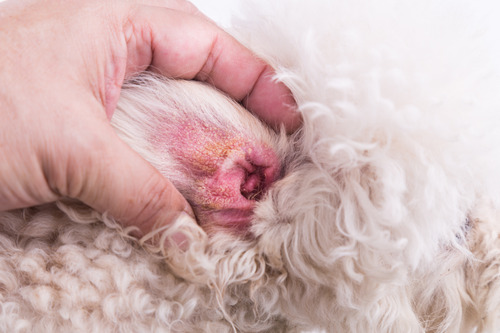A hematoma in a dog’s ear is a common condition that can affect any breed but is more prevalent in those with floppy ears. This condition arises when blood vessels in the ear flap rupture, causing blood to collect between the skin and cartilage of the ear, leading to swelling. This can be uncomfortable and painful for your pet, and if noticed, should be addressed by a professional. Taconic Veterinary Center in Cortlandt Manor, NY, has experienced veterinarians ready to diagnose and treat this condition. For expert care, call (914) 737-2437.
Identifying Common Causes
Hematoma dog ear often results from trauma to the ear area, which can occur during vigorous head shaking or scratching due to irritation. Other underlying issues like ear infections, allergies, or parasites can lead to behaviors that precipitate a hematoma. Recognizing and treating these underlying conditions promptly can help reduce the risk of a hematoma developing.
Steps for Prevention
Preventive measures include regular check-ups to catch and manage ear infections and allergies before they lead to more severe complications. Keeping your dog’s ears clean and dry is crucial, especially after baths or swimming, to prevent infections that can cause discomfort and lead to scratching or shaking.
Diagnosis and Professional Care
Diagnostic Approach
At Taconic Veterinary Center, our approach begins with a thorough examination of your pet’s ear to determine the exact cause of the hematoma. This may include cytology to check for infections or a biopsy to rule out other underlying conditions. Understanding the cause is crucial to prevent recurrence and to choose the most effective treatment.
Importance of Professional Treatment
It is essential to seek professional care for a hematoma dog ear as untreated, it can lead to complications such as ear deformities or chronic pain. Our veterinarians at Taconic Veterinary Center are equipped to provide treatments that may include draining the hematoma, prescribing medications, or in some cases, surgery to prevent further damage.
Treatment Options
Non-Surgical Treatments
In cases where the hematoma is small and not causing significant discomfort, conservative treatment options such as aspiration may be considered. Medications to reduce inflammation and address any underlying infection can also be part of the treatment plan.
Surgical Solutions
For larger or more persistent hematomas, surgical intervention may be necessary. This procedure typically involves making an incision on the ear to drain the blood and then suturing the space to prevent reaccumulation. Post-surgical care is vital to ensure healing and to monitor for any signs of infection or recurrence.
Recovery and Aftercare
Following treatment for a hematoma dog ear, it’s important to keep your dog’s activity level low to ensure the ear heals properly. Regular follow-up visits to Taconic Veterinary Center will be necessary to monitor the healing process and to adjust any treatments as needed.
Long-Term Management
To prevent future occurrences, long-term strategies may include managing allergies, maintaining ear hygiene, and using appropriate flea and tick preventatives. Regular veterinary check-ups will help catch and address any issues before they lead to complications.
Caring For Your Dog’s Ears
Hematoma dog ear can be a distressing condition for both pets and their owners. Prompt and effective treatment is necessary to ensure your dog’s comfort and health. If you suspect your dog might be suffering from this condition, don’t wait. Call Taconic Veterinary Center at (914) 737-2437 for a consultation to ensure your pet receives the best possible care.





